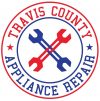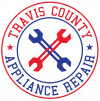How Vent Hoods Work and Common Repair Issues
A vent hood, range hood, or extractor hood is an essential device designed to remove airborne grease, heat, steam, and cooking odors generated during cooking. This canopy or hood in place of a cooker, usually a stove or cooker, draws in or air back in. The kitchen has a recirculating fan or blower system.
Range hoods are one of those kitchen appliances that are widely used but not always appreciated for the work they are used for. You never know it’s there. You’re on when you’re cooking, and that’s it. You don’t think about it anymore. That is, of course, until it stops working. That’s when you realize something significant has gone wrong in your kitchen. As well said, you don’t have to worry about anything as long as it’s gone. The possibility of a broken range hood gives you anxiety, but we’re here to tell you not to panic.
Here’s how the vent hood typically works:
01. Capture
While cooking, the canopy of the vent hood captures steam, grease, and rising odors.
02. Filtering
The captured air is then drawn into the vent hood through a filter. These filters are designed to capture grease and other debris, preventing them from leaking back into the kitchen or disabling the filters.
03. Extraction
After the air is extracted, it is expelled from the building through a duct system or another filter and returned to the kitchen to remove odors and contaminants.
04. Fan or Blower
The fan or blower is the heart of the vent hood. It creates the ventilation needed to get the air into the hood and through the filter. The fan speed can usually be adjusted.
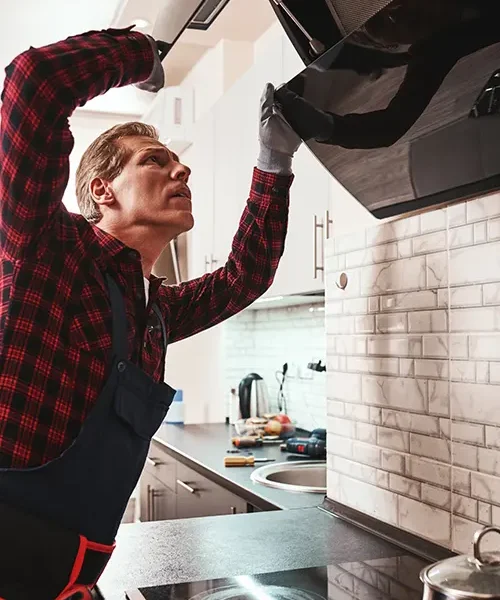
A vent hood is one of your kitchen’s most used and underappreciated appliances. You never know it’s there. You bake while cooking, but that’s it. You don’t give it another thought. That is, of course, until it stops working. At this part, we are explaining common vent hood issues.
Common Vent Hood Issues and Causes
We listed common vent hood issues and causes and then talked a bit about what you can do to fix these problems.
Lights Do Not Work
Reasons:
- Poor user interface handling
- Bad bulb socket
- Electronic control failed
- Faulty wiring
- Broken light switch
Warning: Installing range hoods makes most of the work guesswork and testing when you do it yourself. Sort of, “Well, if it didn’t work, I should change it and see if that fixes it.”
Start by removing the hood and checking the wiring connection between the light socket and the control board or switch. If a wire is loose or broken, repair or reconnect it when you open it.
If the wiring is good, check your electronic control board (ECB) for burn marks. If there is a burn mark, you must replace the ECB, as it indicates a failure.
If your range hood controls the light through the user interface, you may need a replacement to send signals to the ECB when buttons are pressed. The user interface controls consist of a keyboard and a display panel on which you select functions. The ribbon then transmits the signal over the wires to the ECB. This is where the warning comes to us from above: if the ECB does not turn on the light, you will need to change it. You must replace the user interface control if the lights do not work.
If, however, you get to avoid this crap because your range uses hood switches, then you get to do something different. Start by turning off and removing the range hood. You should then use a multimeter to test the switches and lights for continuity. If not, replace the switch.
If you have replaced the switch and it still does not work, replace the bulb. Then, use the polymer again to check that the light coils receive electricity. If not, replace the socket. By doing this, you can quickly repair one of the typical vent hood issues.
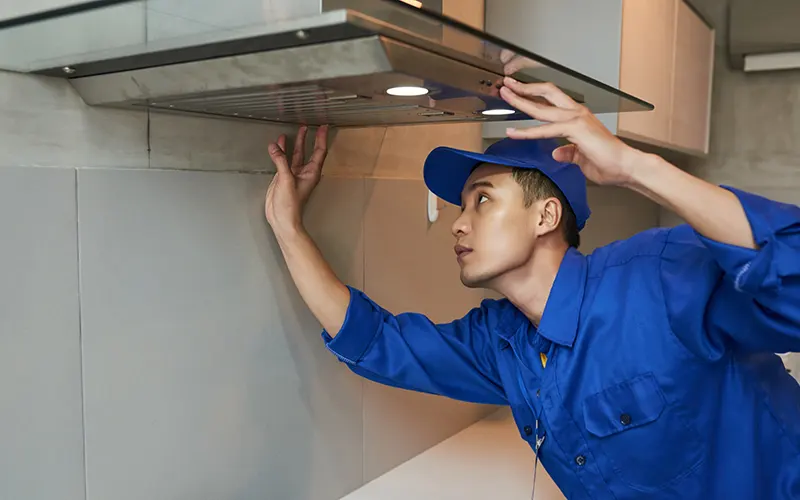
Your Fan Is Not Drawing Enough Air
Reasons:
- Preventive measures
- Motor failure
- An ax was broken
- Airway problems
Trying to clean the kitchen because your kid smokes, trying to make lunch. And it didn’t matter. The problem is that your fan isn’t pulling in enough air.
If your range hood leaves your home, check the grease filter. Wash or change if dirty. Then, check the airtightness. The barrier prevents air from entering the vents when the range hood does not. If it doesn’t open, it’s time to replace it. Also, check the fan’s damper to ensure one is properly open. If your range is open, check your fan blade for damage. A damaged blade isn’t aerodynamic, so it won’t draw air correctly. If so, you need to replace it. Shut everything down and turn on the fan. If you are still not getting the right speed or your fan is making a noise, it may be the fan motor. If so, that’s the only way to fix it.
However, things are a little different if your range hood draws air back into the kitchen through a charcoal filter. Start by testing your filter. If it clogs, replace it. Now, it’s the same as the external venting model. Check the grease and air filters for damage to the blade or fan motor, and your vent hood issues will be fixed easily.
Fan Turns On
cause:
Some models have a ‘sentry feature’ that controls the vent above the kitchen. When the temperature is hot enough to trigger an alert, the guard system will turn on the exhaust system.
However, if your fan continues to come on even after the kitchen is off, a faulty sensor, broken ECB, or loose wiring could be the cause.
When you open your range hood, you’ll find a temperature sensor to measure the air in your roof. You may want to find a tech sheet or technical data for your model and check its resistance with a multimeter. You will see a temperature/resistance chart. If the reading you get doesn’t match the strength requirements on the paper, you need to replace the sensor.
If the sensor is in the program, check the wiring and connection. If that’s all good, then the ECB itself fails and needs to be replaced because the board doesn’t record the sensor’s input properly.
The Fan Does Not Work
Reasons:
- Wiring malfunction
- Electronic control board failure
- Fan motor defective
- User interface error
- Dead fan switch
Like our notes in the previous list, this is a lot of thinking and testing if the lights don’t work.
Start by unplugging the range hood and checking for a wiring connection between the control and the fan motor. You want to make sure nothing gets damaged or interrupted. Now go ahead and check if the ECB has a burn mark. If the latter is yes, you should at least change it.
If your range hood uses user interface control, you will need to go back to our section on lighting and do some testing to see if the interface is the problem or the ECB
If the switch is nearby, you should pick up a multimeter instead. Again, at this point, you still need to unplug your hood. Check the switch and ECB to see if they are sending current. If there is no switch, replace it. If ECB is missing, replace it. If both are present but the fan motor is unresponsive, replace it.
Range hoods are tricky things, aren’t they?
No Lights Or Fan Not Working
Reasons:
- Bad user interface
- Failed electronic controls
- Broken switch
- Faulty wiring
- Broken light socket and fan motor
Try replacing the bulb before doing anything else. If the lights and fan still don’t work, disassemble your range hood and check the wiring and harness connections. Loose or broken wires can simply explain why the lights and fan are not working properly.
Now, on to the ECB. Check for burn marks. If they do, you know the board has failed and needs replacing.
If your range hood uses user interface controls, scroll down to the section where the light does not work and follow those instructions. Yes, we know it’s frustrating. We think so, too when we need to fix it.
If your range hood uses a switch to control the lights and fan, remove it and grab your multimeter. You can check if the switch sends current to the light and fan when it is on. If the meter returns zero voltage, the switch is not flowing current, and it should be replaced.
If none of these work, check the light fibers with a multimeter. If no current flow is listed, the socket is the issue.
Return to your fan motor, which also requires unplugging your range hood. Go back to your simple multimeter and check for current. If not, the engine must be replaced.
Fortunately for you and us, we rarely refuse to turn on the lights and the fan simultaneously.
Exhaust Fan Noise
Reasons:
- Damaged or broken fan blade
- Motor damage
- Loose scratches in the room.
For this, we need to look outside the section before we start looking inside. Is a chain loose? (As long as we all joke that we or someone we know has one, it’s no fun if it’s noisy!) Check the mounting screws and make sure they’re tight.
Then, look at the fan screen. If it is broken or damaged in any way, it will not only be noisy but will also reduce the amount of air the fan can pull in. If the sound that drives you crazy is a squealing or grumbling, it could be a bearing. If the bearing is bad, the fan motor can get very hot and noisy. Unfortunately, at that point, all you can do is replace it.
Not On At All
Reasons:
- Fan or light switch failure
- Defective fan motor
- Bad lamp socket
- Lack of electricity
- User interface handling error
- Broken electronic control board
We went through all kinds of pieces that didn’t work correctly, made noise, or didn’t turn on. What do you do if the whole explosion doesn’t burn?
When that happens, start your circuit breaker. If something goes wrong, reinstall. If nothing is dangerous, disconnect the hood and plug in a small light to see if the outlet works. Remove the hood when the outlet is activated and check if the power cord is damaged or lost. (Cats and dogs are often offenders here.)
While unplugging your power cord, check the ECB for any burn marks. Again, if they do, the panel has failed and must be replaced.
If you have user interface control, go back to our lighting section, read the instructions, and guess what goes wrong there.
If the switch is the one that controls your fan and lights, go back to the “lights and fans won’t turn on” section and take your multimeter on the road.
Maintenance Tips For Vent Hoods
For common vent issues, several preventions are listed below; by following these tips, if you face any problem, you can contact appliance repair services for the best home appliance repair.
1. Learn How To Solve Problems
It is always important to know how to fix any minor problems with your equipment. Troubleshooting is easy in the range hood. To ensure your range hood works as it should, turn it off for a few seconds and then turn it back on. Make sure the range hood doesn’t make too much noise. If you hear a lot of noise, there could be a problem with your fan or motor.
If everything looks normal, continue checking the lights. Turn them on and off. If the range hood does not light, you may need to replace the bulb or test the wiring.
Finally, check the range hood. Does the range hood suck, smell, and smoke? If the gas and fumes persist even at high engine speeds, you may need to drain the grease from the system. (More about that below!).
2. Know Preventive Maintenance
Ever heard, “An ounce of prevention is worth a pound of cure?” When it comes to health, the same logic applies to devices. Maintain your range hood to keep it running smoothly and fresh for a long time. First, be sure to read the surgery manual carefully. Properly installing your range hood is the first step in preventive maintenance.
Cleaning the air inlets, filters, and body regularly is recommended, as we will explain below. To avoid taxing the motor, turn off the range hood when not used.
3. Clean Filters Regularly
How you clean your filters depends on what type of filter you have. The Houselane range hoods have non-dishwasher holes. You can just run your next dishwashing cycle and call it a day!
If your metal filter is not dishwasher safe or you just want a deep rinse, put it in a waterproof container like a large bowl. You may want to place each filter in a separate container to ensure enough room to submerge it completely.
Fill the container with warm water and a degreaser like Dawn dish soap. You can also add ¼ cup of baking soda to boost cleaning power. Keep the filters in the solution so that the grease dissolves. You may have to wait a little longer for the fat to wear off. Gently remove the remaining grease with a scrub brush. Once the grease has drained, flush the filter entirely with warm water. Dry the filters with a microfiber cloth. Let the filter dry completely before putting it back in the range hood.
For charcoal filters, it is best just to replace the charcoal filter. We recommend replacing them every two months or when you notice they lose effectiveness. Our filter subscription program makes running your range hood in tip-top shape easy.
4. Repair The Vent Hood Body
Maintaining the body of your range hood prevents marks and stains from the rest of the components. Start by turning off the range hood and your stovetop. The oven must cool completely before cleaning the range hood.
Wipe the body with a soft towel plus a fine liner (including several Houselane range hoods) and a non-abrasive household cleaning solution in the same manner as the grain. Avoid electrifying any clean parts of the equipment or bulbs.
If the outside of the range hood is filthy, you can use hot, soapy water to clean it with a soft sponge. Do not use a sponge with a smooth surface. Be sure to rinse outside with fresh water. Then, finish with a stainless steel cleaner to give the exterior a nice finish and glow.
5. Check The Airflow
If your range hood appears to be blocking the vents, check the vents. Fat can build up and affect performance. This can also be a fire hazard, so a professional must remove the grease if you find it.
6. Clean The Fan Blades
Your fan blades can also collect dirt, debris, and grease. This will affect the performance of your range hood and tax the motor. Cleaning the fans regularly will prevent them from burning your motor.
Start by turning off the range hood. Make sure the stove top is off again and cool to the touch. Wipe down the fan blades with soapy water and a non-abrasive cloth. Rinse thoroughly with a clean cloth and water. Be careful to avoid electrical parts, bulbs, and mechanical rooms.
You can clean the fan with equal parts solution, ammonia, and water. Carefully spray the fan, rinse with fresh water, and allow to dry before use. If you’re tired of cleaning fan blades by hand, try Hauslane’s auto-clean function. This product is used in steam cleaning processes to remove and collect grease. You will appreciate how it keeps the motor running smoothly and improves the mechanical performance.
Vent Hood Repair: Take Action for a Fresher Kitchen!
A vent hood is one of the most usable things used in the kitchen, and it helps to have fresh air in your home without any unpleasant smell. Vent hood is highly used in kitchens, and because of this high usage, it face some problems. Several solutions can easily solve vent hood issues and you can quickly fix them yourself. By controlling your vent hood monthly, you can prevent it from common issues; it is better to call a vent hood repair service to do so.
Frequently Asked Question
A vent hood captures steam, grease, and odors while cooking, draws the air through filters to remove debris, and then expels the clean air back into the kitchen.
The lights may not be working due to issues like a faulty bulb socket, electronic control board failure, or faulty wiring. Check these components and replace as needed.
Inspect and clean the grease filter, ensure the ductwork is clear, and check for any damage to the fan blade or motor. Replace components if necessary to restore proper airflow.
An unexpected fan activation could be due to a faulty temperature sensor, broken electronic control board, or loose wiring. Check these components and replace if faulty.
The fan may not be working due to wiring issues, electronic control board failure, defective fan motor, or problems with the user interface. Check these areas thoroughly for faults.
amazing things you didn't know about Appliance Repair
Comprehensive Guide to Milky Wins Casino Withdrawal Process
Understanding the Withdrawal Process at Milky Wins Casino Welcome to Milky Wins Casino https://milky-wins.org, where players can enjoy a thrilling gaming experience and have the chance to win big. One crucial aspect of playing at
Claim Free Spins and Dive into the Excitement at Admiral Shark Casino
Admiral Shark Casino Free Spins Welcome to Admiral Shark Casino, where the thrill of gaming meets the generosity of free spins! If you’re a fan of online casinos and love the opportunity to spin the
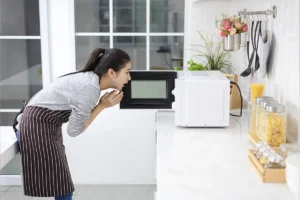
Microwave Repair Warning Signs You Shouldn’t Ignore
Microwave Repair Warning Signs You Shouldn’t Ignore The Importance of Recognizing Microwave Issues Microwaves are essential kitchen appliances that help us prepare delicious meals for our loved ones and ourselves. Unfortunately, like any other home
